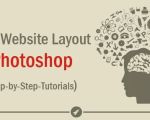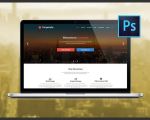- 1-WordPress Website Design Basics
- 2-Planning Your Website Structure
- 3-Choosing The Right Theme-And Plugins
- 4-Customizing Your Website Design
- 5-Practical Examples-And Tips
1. WordPress Website Design Basics
Designing a website on WordPress is an accessible process even for beginners, but mastering it requires understanding some core concepts. WordPress offers a flexible platform that allows you to build anything from a simple blog to a complex business site. The foundation lies in choosing the right setup and tools that align with your goals.
One of the reasons WordPress is popular for website design is its vast ecosystem of themes and plugins, which give you the freedom to customize without needing advanced coding skills. However, knowing how to design a website on WordPress goes beyond picking a pretty theme—it involves planning your content, user experience, and functionality carefully.
1.1 Understanding WordPress Structure
At its core, WordPress separates content from design. The CMS (Content Management System) manages your posts, pages, and media, while themes control the visual appearance. Plugins add extra features such as contact forms, SEO tools, or e-commerce capabilities.
This separation means you can update your content regularly without redesigning your site, a crucial advantage for maintaining a fresh and dynamic website.
2. Planning Your Website Structure
Before diving into design, thoughtful planning of your website’s structure is essential. A clear layout helps users navigate intuitively and find information quickly, which improves engagement and SEO performance.
2.1 Mapping Out Pages and Navigation
Start by defining the key pages your website needs—such as Home, About, Services, Blog, and Contact. Organize these into a hierarchy, considering which pages should be top-level and which might be subpages.
For example, a service-based business might group offerings under a Services menu, making it easy for visitors to explore related options without cluttering the main navigation.
2.2 User Experience Considerations
When planning how to design a website on WordPress, focus on simplicity and accessibility. Ensure menus are straightforward, buttons are easy to find, and the layout adapts well to mobile devices. Responsive design is no longer optional; it’s critical for both user satisfaction and search rankings.
3. Choosing the Right Theme and Plugins
The choice of theme heavily influences your website’s look and feel. WordPress offers thousands of free and premium themes catering to various industries and styles. Selecting a theme that matches your brand personality and functional needs can save time and provide a professional finish.
3.1 Evaluating Themes
Look for themes that are regularly updated, well-reviewed, and optimized for speed. Some popular themes provide built-in page builders, enabling drag-and-drop customization without code. Consider themes with good SEO foundations to help your site perform better on search engines.
3.2 Essential Plugins for Enhanced Functionality
Plugins extend your website’s capabilities. Depending on your goals, you might need plugins for SEO optimization, security, performance caching, or e-commerce like WooCommerce. When adding plugins, quality and compatibility matter to avoid conflicts or slowdowns.
4. Customizing Your Website Design
Customization is where your website truly becomes unique. WordPress allows you to adjust colors, fonts, layouts, and content blocks within the theme settings or via page builders like Elementor or Gutenberg.
4.1 Visual Consistency and Branding
Consistency in design elements such as color schemes and typography reinforces your brand identity. Choose a palette that reflects your brand values and ensures readability. Using a style guide can help maintain uniformity across pages.
4.2 Adding Interactive Elements
Interactive features like sliders, video embeds, and contact forms increase user engagement. However, they should enhance the experience rather than distract from your content. Balance functionality with performance for optimal results.
5. Practical Examples and Tips to Design Your Website Effectively
Consider the story of a small business owner who needed a quick online presence. By following a structured approach—starting with a simple theme, organizing pages logically, and installing key plugins—she launched a fully functional website within days. Her site’s clean design and easy navigation attracted local customers, demonstrating how effective design translates to real business results.
5.1 Avoiding Common Pitfalls
One common mistake is overloading the website with too many plugins or flashy animations, which can slow down the site and frustrate visitors. Another is neglecting mobile responsiveness, which today’s users expect as standard.
5.2 Leveraging Professional Help
For more complex projects or faster results, turning to professionals can be a smart choice. SitePoint 24 offers tailored services that help you get the best design, hosting, and support to build a website that meets your needs and exceeds expectations.
Knowing how to design a website on WordPress empowers you to create an effective, attractive online presence. With careful planning, smart theme and plugin choices, and thoughtful customization, your site can become a powerful tool for engagement and growth.








